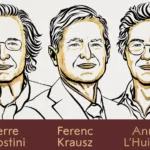Atomic nuclei consist of protons and neutrons and are composed of a trio of fundamental particles called quarks. Led by theoretical physicist Shohini Bhattacharya at the Brookhaven National Laboratory, a pioneering study delves into the intricate quark distribution within the proton. This endeavor promises to significantly amplify our comprehension of the fundamental constituents of matter and their complex interactions.
The subatomic milieu within protons is an arena of ceaseless activity, where quarks and their antipodal antiquarks manifest in a constant dance of creation and annihilation. Amid this quantum turbulence, two distinct ‘flavors’ of quarks hold prominence – the up-flavor quarks and the single down-flavor quark. These quark compositions bestow protons with their definite characteristics.
The study employs an array of advanced analytical techniques. These methodologies culminate in the creation of the highest-resolution map, detailing the spatial distribution of quark flavors within a proton. The study’s lead theoretical physicist, Swagato Mukherjee, clarifies that their computations reveal a more symmetrical and localized distribution for the up quark. This distribution is distinct from the dispersion pattern observed in the down quark.
The implications of these revelations extend beyond the precincts of particle physics, resonating with broader ramifications. A nuanced comprehension of the distinct behavioral traits of up and down quarks within a proton Is ready and prepared. Yield insights into its internal energy, spin, and sundry other attributes. This enhanced understanding can, in turn, furnish a refined toolkit for the analysis of forthcoming experiments in the domain of fundamental physics.

Analogous to a bag of marbles, where the bag symbolizes the proton and the quarks are akin to marbles, delicately held in position by force-mediating ‘gluon’ particles, the study effectively dissects the complex interplay between these ‘marbles,’ unraveling the intricacies of their dynamics.
Central to this inquiry is the deployment of lattice quantum chromodynamics (QCD), a potent technique that arranges quarks within a four-dimensional construct. This framework enables a precise modeling procedure, aided by high-performance supercomputing resources. This approach meticulously scrutinizes all potential interactions and calculates their corresponding probabilities, culminating in a detailed cartography with a resolution tenfold superior to prior endeavors.
Remarkably, the manifestations of up and down quarks collectively contribute to less than 70 percent of the proton’s spin. This revelation underscores the potentially pivotal role played by gluons, compelling a reevaluation of preconceived notions.
These insights hold the potential to catalyze transformative shifts within the realm of particle physics. The heightened resolution of the ‘bag of marbles’ within a proton offers a portal to unravel profound mysteries inherent to this domain. As scientists venture further into the uncharted terrain of quark dynamics, the groundwork established by this study lays the foundation for forthcoming explorations.
As we continue this scientific journey, upcoming experiments at research facilities like the Continuous Electron Beam Accelerator Facility (CEBAF) and the Electron-Ion Collider (EIC) stand ready to leverage the insights gained from this study. These initiatives will build upon the insights provided by this study, working to validate and refine the proposed models.
Physicist Joshua Miller from Temple University emphasizes, “To capture the full picture of the proton, we must merge theory and experiment.” As quarks’ intricate choreography unfolds, scientists stand ready to reveal the symphony of the subatomic universe’s fundamental building blocks.
The research has been published in Physical Review D.






